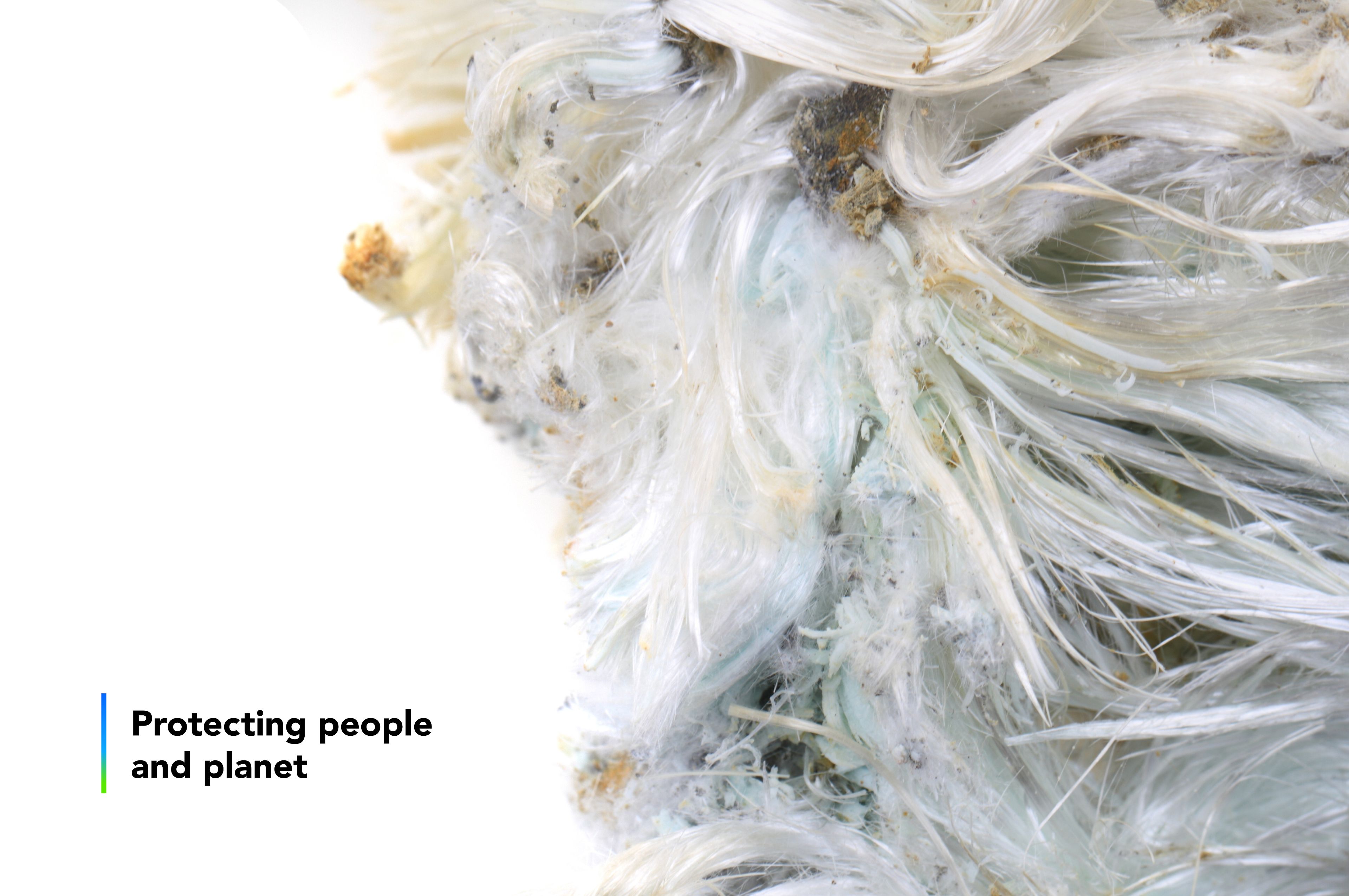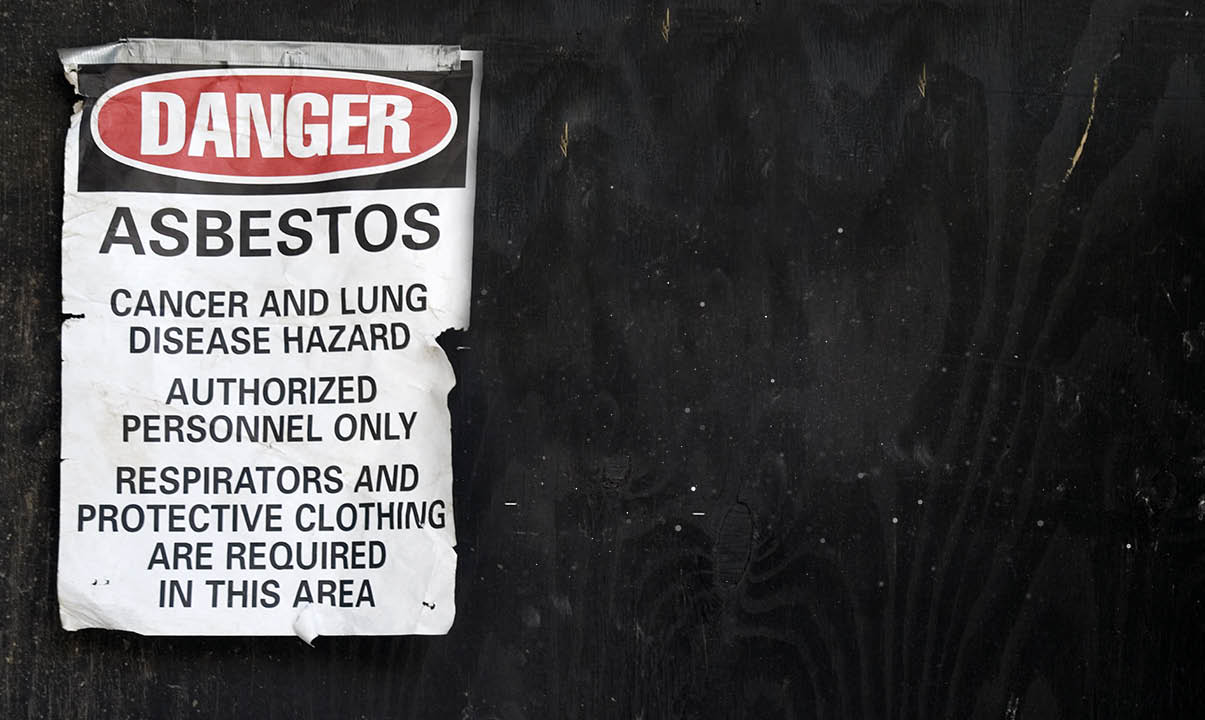ATaC And NORAC Publish The First Annual Data Analysis Report Into Asbestos In UK Buildings
13 January 2023
After attending a key review meeting with the Asbestos Testing and Consultancy Association (ATaC) and The National Organisation of Asbestos Consultants (NORAC), Lucion Group’s Group Quality and Assurance Director Chris Parr and Lucion Services’ Managing Director - Inspection, Jeremy Meredith provide insight into The First Annual Data Analysis Report Into Asbestos In UK Buildings.
2022 marked the 20th anniversary of the Asbestos Duty to Manage was introduced (2002 with implementation completed in 2004). Since this key regulation came in, multiple industry bodies and professionals have campaigned for the HSE to review these regulations with the intent to rectify the current clearance level indicator to that close to our European counterparts.
During 2022 the two Associations (ATaC and NORAC) representing organisations carrying out Asbestos Testing and Inspection teamed up to collate and rationalise data collected by their members in asbestos surveys between October 2021 and March 2022. This report, The First Annual Data Analysis Report Into Asbestos In UK Buildings, released in November 2022, is a data-driven response to the suggestion that little evidence exists about the current extent and condition of asbestos in UK buildings.
A key trigger for this partnership was the Parliamentary Inquiry into HSE's approach to asbestos management which began at the end of 2021 and was published in 2022 with a number of recommendations including;
- Using recommendations from the enquiry to inform the Post Implementation Review and develop research - Accepted
- HSE’s asbestos related research - developing new methods of information capture to determine duty holder compliance and inspection programmes - Accepted
- Central register of asbestos in non-domestic buildings - Rejected
- New exposure levels - HSE to review evidence and determine if requirement for new workplace limits - Accepted
- Information sharing - educating duty holders to manage the risk and reduce worker exposures - Accepted
- Regulatory activity - HSE focus to commit to programme of inspections - Accepted
- Using outcomes from duty to manage inspections to inform future activities - Accepted
- Communications and increased campaigns targeting the risk from work with asbestos as part of the UK’s net zero agenda - Accepted
- Notifiable and non-notifiable work - HSE will explore further the categories of work within the regulations - Accepted
- Use of Asbestos surveyors - HSE to engage with UKAS and stakeholders to further reinforce guidance - Accepted
- Asbestos strategy - a fixed deadline of 40 years for removal of all asbestos was seen as a concern - Rejected
- Occupation recorded on death certificates could introduce bias and would require buy in from many Government Departments - Rejected
The ATaC-NORAC collaboration has achieved something never seen before in our industry with 20 UKAS accredited Inspection Bodies (the estimated turnover of these 20 IBs is 35% of the total addressable market in the UK) contributing over one million lines of survey data to form a comprehensive dataset covering more than 128,000 sites with in excess of 710,000 asbestos-containing items. Lucion Services's contribution to this dataset amounted to more than 120,000 lines of survey data taken from our NexGen system, our proprietary hazardous materials software.
The report considered the Material Risk Assessment of all asbestos items detailed and 71% were recorded as having some level of damage. It should be noted that of all the sites identified, 73% were related to domestic premises. And whilst this continues, the incidence of asbestos-related disease prevails, with HSE predictions consistently surpassed by the actual reality of the number of deaths.
The Historic Issue of Asbestos
During the periods of 1920-1970 and 1971-2000, Europe used a significant portion of the world's asbestos trade, with 48% and 58% respectively, making it the historical global centre of asbestos use. The highest importers were the UK, Germany, and France.
In the UK, during the 1950s, 60s, and 70s there was a building boom, during which amosite asbestos was used inside buildings as insulation and other products, and chrysotile asbestos was used in cement and cladding on the exterior of buildings.
Since the UK banned asbestos in 1999 and research has shown the harmful effects of asbestos, it has been recognised that disturbing Asbestos-Containing Materials (ACMs) in older buildings can release harmful fibres, posing dangerous health risks to individuals.
The Cost of Getting it Wrong
Airborne asbestos fibres that are small enough to reach deep lung tissue cannot be expelled through breathing, so the body must use other methods to remove them. The primary method is to try to dissolve the foreign fibres with acids, but some asbestos is resistant to acid. This can lead to damage of the tissue surrounding the asbestos fibres and the development of scar tissue and other medical conditions known as asbestos-related diseases.
The currently accepted level of airborne asbestos fibres (HSE clearance indicator) used to declare areas of a building safe for normal occupation following licensed asbestos removal is less than 0.01 f/ml. The HSE defines licensable work in relation to control limits, where risk assessment cannot clearly demonstrate that airborne fibre levels will not exceed 0.1f/ml averaged over a 4-hour period or 0.6f/ml averaged over a 10-minute period. Many European countries and closest neighbours have introduced stricter controls. For example, the Netherlands updated its occupational exposure limits to 0.002 f/ml in 2014 with the intention of lowering it even further to 0.0003 f/ml in the future. Despite ample evidence suggesting that the current HSE clearance indicator is inadequate, it has remained the same for the past 30 years.
The Current Asbestos Regulations
People in charge of public buildings have strict legal and HSE responsibilities to reduce the health risks posed by asbestos-containing materials (ACMs). There should be no excuse for anyone being exposed to potentially dangerous levels of airborne asbestos fibres in any building.
According to current UK policy, asbestos that is in good condition and is unlikely to be damaged or disturbed is not considered a significant health risk as long as it is properly managed. However, when ACMs are disturbed or damaged, the risk of exposure increases through the release of airborne fibres. Some groups and industry professionals argue that a policy of waiting for materials containing asbestos to deteriorate before removing them is not proactive enough in managing ACMs, resulting in unnecessary risks remaining in place.
It is clear that asbestos in buildings still remains a significant issue that requires more than just the 'manage in situ' approach. The majority of ACMs are reported as being damaged which necessitates remediation to prevent further exposure of building occupants and ultimately prevent unnecessary deaths.
According to Think Tank ResPublica, an estimated six million tonnes of asbestos remain inside 1.5 million buildings in the UK (an estimated 300,000 non-domestic buildings containing asbestos in the UK). Removing these potentially lethal materials completely could result in many schools, hospitals, and other public buildings being shut down due to the soaring associated costs with the complete removal. The cost to councils and the taxpayer arguably would be crippling and unmanageable.
Based on the evidence presented in the ATaC/NOVAC report, we continue to stand by the recommendations presented in ‘The Health and Safety Executive's Approach to Asbestos Management’ report put forth by the House of Commons Work and Pensions Committee.
About The Authors
Chris Parr
Group Quality and Assurance Director
Chris has over 12 years of experience specifically monitoring, managing and leading on quality assurance for the Lucion Group, having joined us via Lucion’s acquisition of AOH Ltd in 2011. Chris was integral to the successful creation of a strong QHSE culture at Lucion Services, where he maintained an integrated Quality Management System (PAS 99 certified by BSI) to include ISO17020, ISO17025 (requirements for asbestos testing, and inspection accreditation by UKAS), ISO9001, ISO14001 and ISO45001 (certified by BSI).
In his role as Group Quality & Assurance Director for the Lucion Group, Chris utilises his experience gained and integrates our strong culture for integrated quality management across our Lucion Group portfolio of companies, working closely with the Lucion Group Technical Director and our individual business leaders.
E: chris.parr@lucionservices.com
T: +44(0)345 5040 303
Linkedin: Chris Parr
Jeremy Meredith
Managing Director - Inspection
As Managing Director of Lucion Group’s scientific testing and inspection business, Lucion Services, Jeremy leads a team of over 300 individuals who assess and advise on hazardous materials in the built, infrastructure, and marine environments.
Having joined Lucion following Lucion’s acquisition of Innov8 Safety Solutions in 2014 Jeremy has undertaken a series of senior roles throughout the Lucion Group, gaining a deep understanding of our culture, purpose, and processes, combined with experience in construction and consultancy.
E: jeremy.meredith@lucionservices.com
T: +44(0)345 5040 303
Linkedin: Jeremy Meredith
Tool Box Talk: Asbestos Awareness
As part of Lucion’s Take Care Be Aware initiative, we actively take care of our health and safety responsibilities, with continuous awareness of our commitments to knowledge share and educate.
In doing so we have created a ‘toolbox talk’ on asbestos awareness to raise awareness of the hazards associated with asbestos-containing materials, enabling safety professionals to share knowledge and overall save the time and effort in producing them for you and your teams.
_2.png)
Download From NexGen
Asbestos Compliance: 6 Step Checklist
Download our free 6-step Asbestos Compliance Checklist and take the first step to safeguard your teams, contractors, and reputation.
No Sign-Up Required
Asbestos Management in Education Settings
Head of Business Development Kim Johnson, with 12 years of experience within the asbestos industry, outlines how education settings can manage their asbestos hazards.
No sign-up required.
Lucion Group Brochure
Lucion Group is a purpose-driven company where we protect people from hazardous environments and protect the environment from the impacts of people.
Find out about our suite of services with our overview services brochure.
No sign-up required
IMPACT Magazine
Industry news delivered by Lucion Group and its subsidiary companies.
Issue 2 May 2023
No sign-up required


 NexGen
NexGen












